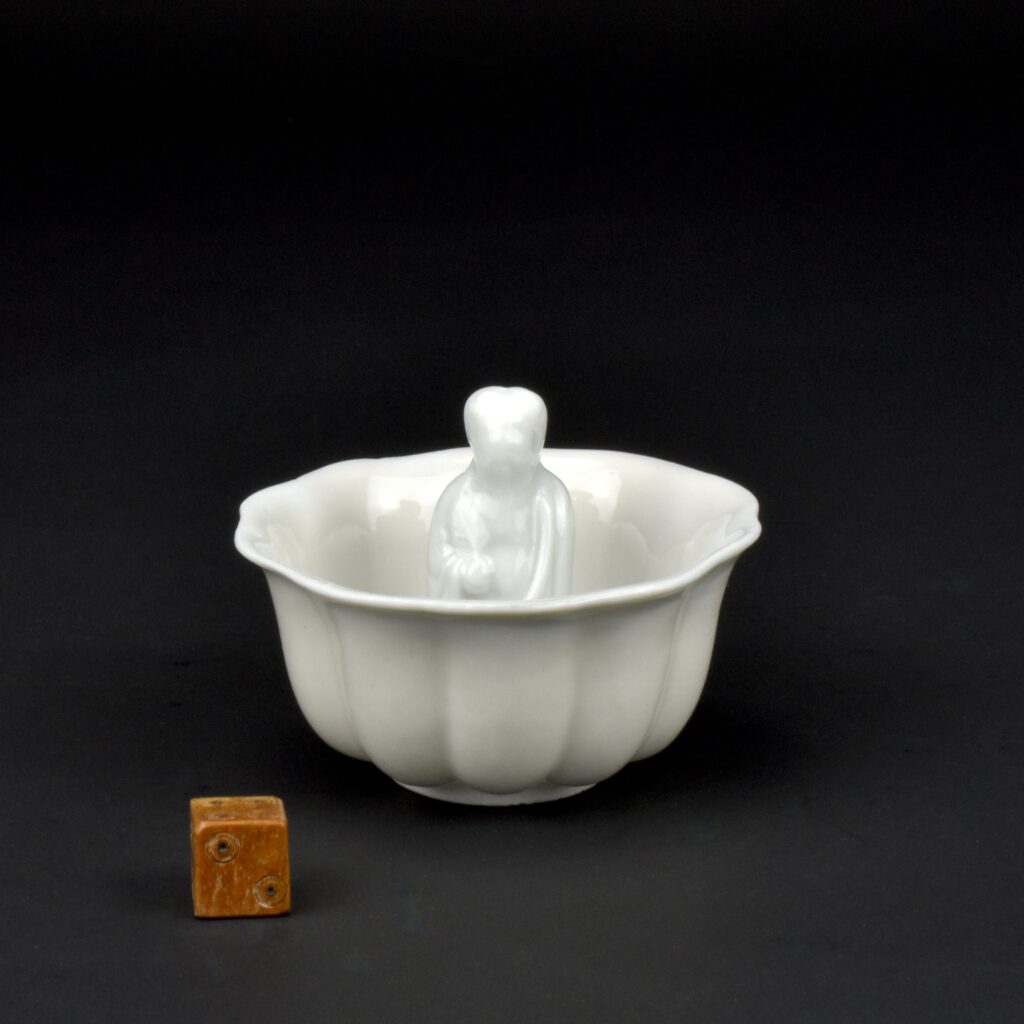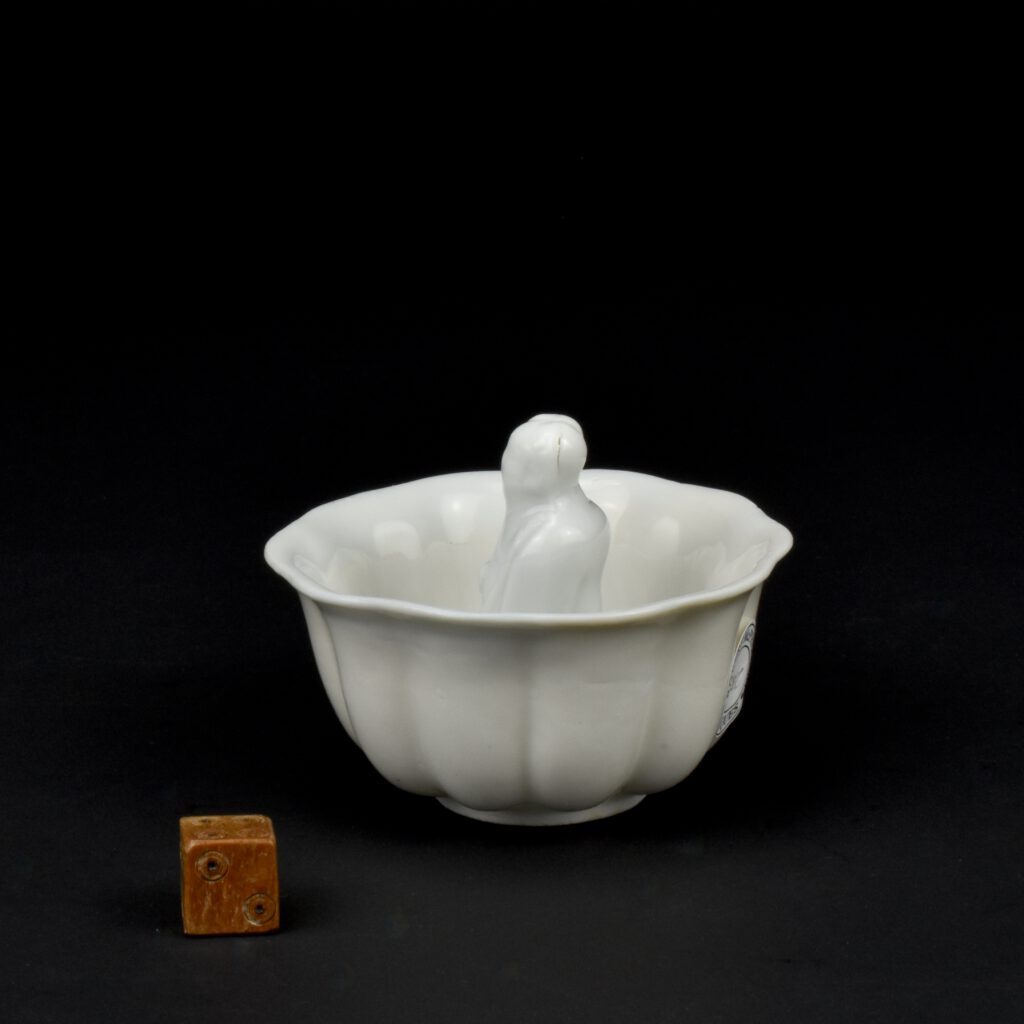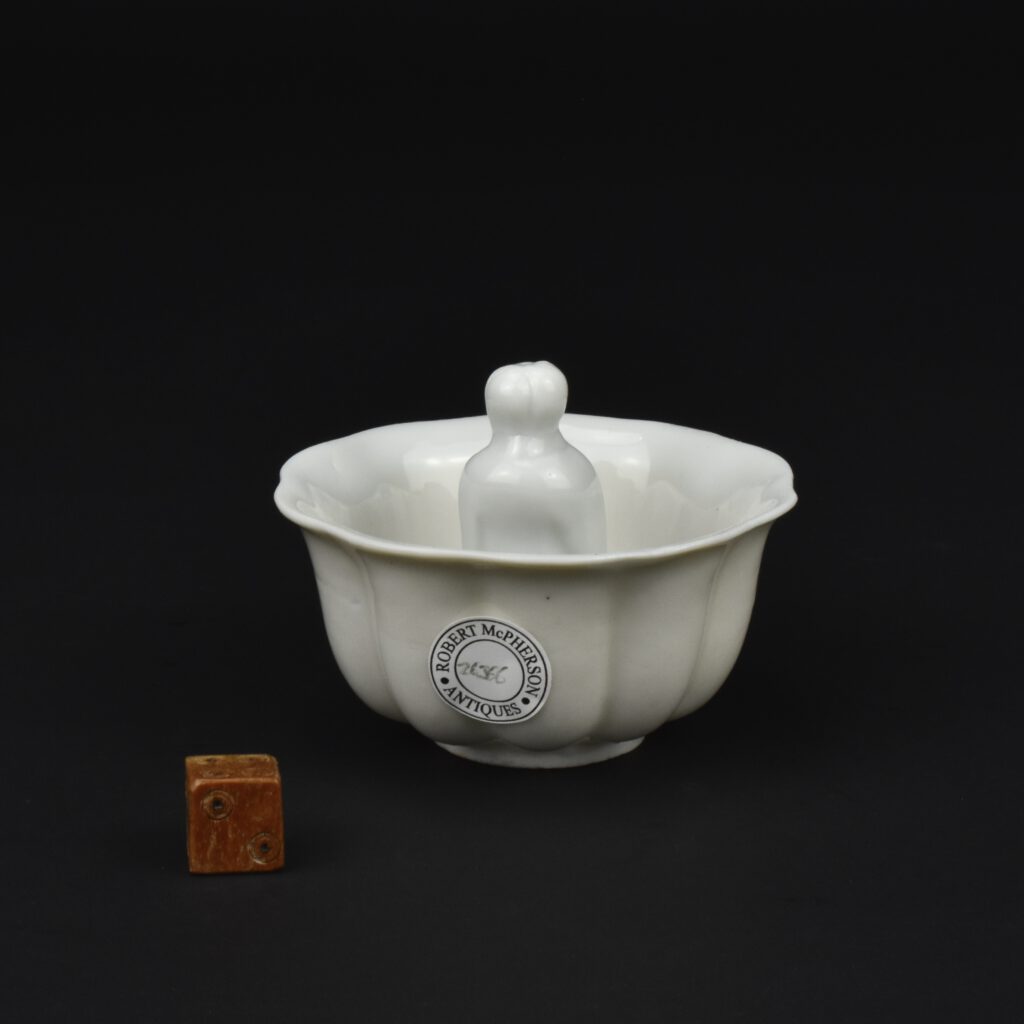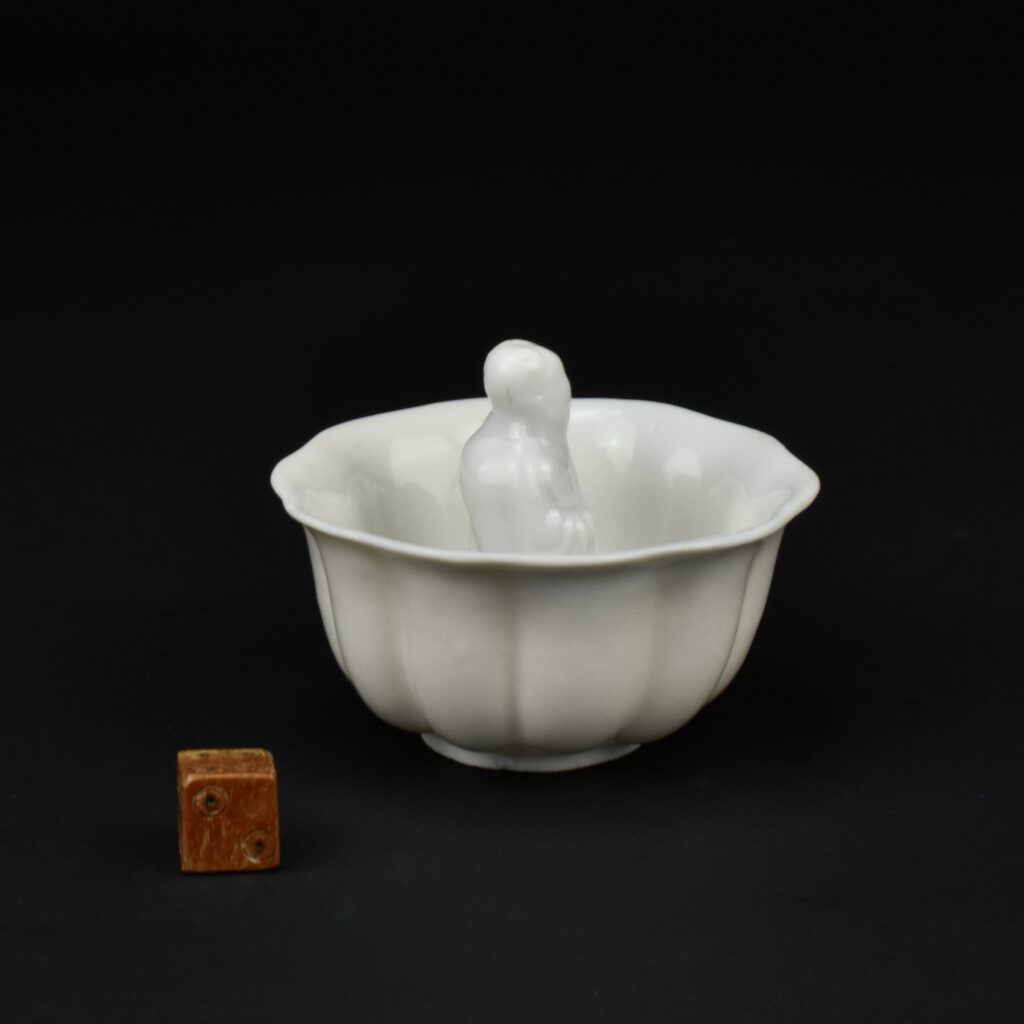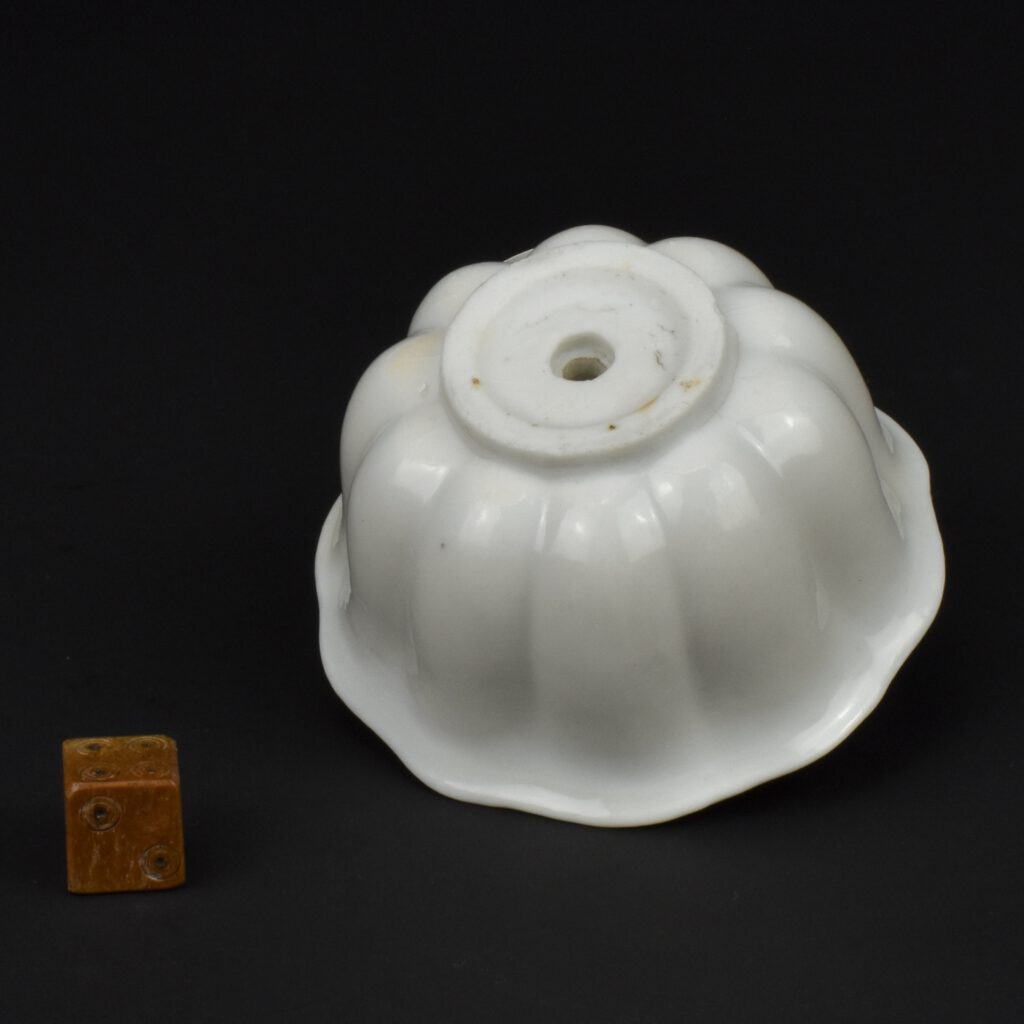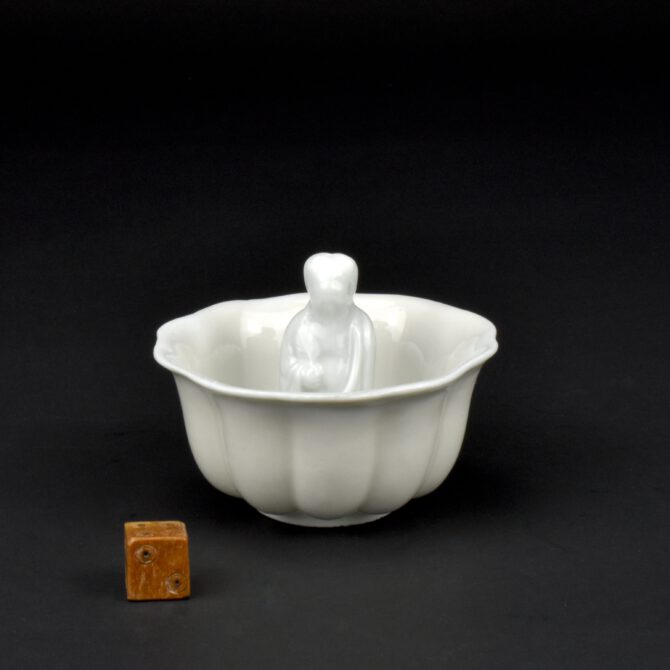
A 17th Century Blanc de Chine Porcelain Trick Cup
A 17th century Blanc de Chine Porcelain ‘Trick Cup’, Dehua kilns, Fujian Province c.1640 – 1680. The cup is moulded in the shape of a flower and in the well of the cup is one of the Xian `The Eight Immortals`. Zhongli Quan is one of the Eight Immortals of Chinese mythology, in legend he holds a peach, and often holds a large feather fan which can resurrect the dead and transform stone into silver or gold. He was also referred to Han Zhongli, as he was said to be from the Han Dynasty. There are comparative Blanc de Chine trick cups below as well (see Information) including one from the Hatcher Cargo of c.1643. Trick Cups or `Gong Dao Bei` (don’t be greedy cup or fairness cup) were wine cups where the wine would drain over the lap of heavy drinker. They illustrate the classical Chinese paradigm that modesty brings gain and arrogance results in loss. If you fill the cup to the top, taking more than your share, every drop will drain out onto your lap through a hole in the bottom, but if you are modest and only fill the cup half full you will be able to drink normally. The earliest cups of this type were made during the Song Dynasty (960-1279) but most are 18th or 19th century. For more information on trick cups and a description of how they work see : Chinese Puzzles, Games for the Hands and Mind, Traditional Chinese Puzzles from the Yi Zhi Tang Collection (Wei Zhang and Peter Rasmussen, Chinese Culture Center of San Francisco, 2008. ISBN 978-1-58886-101-6) pages 76 and 77).
The term `Scholar’s object` refers to something used by a Chinese scholar in his or her studio, it includes everything from scroll-tables, desks, screens, and chairs to the smaller objects found on the scholar’s desk. The material used for these desk objects varied greatly, from bamboo to stone, ivory, wood, and metal, but ceramics were by far the most commonly used material, even though ceramics rated lowest in ranking of importance. Bamboo, ivory or wood might not be durable enough and metal was sometimes too heavy but ceramic objects could be thrown or moulded into an infinite variety of forms. Most of the objects made centred around the functions of writing and painting. Brushpots of different sizes and shape were needed to take the various types of brush, the same applies to brush rests. Water-droppers for adding water to dry solid ink when it was ground on an inkstone, as well as the inkstones themselves were all needed, as were water-pots and brush-washers. All of these could be made of porcelain. But these were not merely functional items, they conveyed symbolic mean, often enhancing scholarly virtues and the wish for longevity. They were meant to inspire the writer, poet, and artist but it is clear they could also exhibit a great sense of humour, sometimes having almost childlike quality. Objects for the scholar’s desk were made from many different ceramic bodies, during the Song Dynasty (960-1279) Qingbai porcelain was most frequently used, often in moulded forms. Blue and white porcelain objects became popular from the Ming dynasty onwards. By 17th and early 18th century, Blanc de Chine, and biscuit porcelain with coloured glazes such as green, aubergine or turquoise were also popular. Some of these objects were shipped to Europe at the time. The records of the Dashwood, a British trading vessel, were sold at in September 1703, this Supra-cargo, include 10,800 `square toys`. These were Blanc de Chine seals, I have bought and sold many of these over the years. Some are uncut, some have mould seals to the base and could have been used in China, there seals that were engraved, its likely these were not exported. However, the label, ‘square toys’, shows that in Britain they were seen as novelties to show friends and to be on display in cabinets. I’m not sure if the Chinese scholarly class would have approved.
SOLD
- Condition
- In very good condition, a minute very shallow glaze frit.
- Size
- Diameter 7 cm (2 3/4 inches). Height 5.3 cm.
- Provenance
- From a Private English Collection of Blanc de Chine Porcelain.
- Stock number
- 26366
- References
- Chinese Puzzles, Games for the Hands and Mind, Traditional Chinese Puzzles from the Yi Zhi Tang Collection (Wei Zhang and Peter Rasmussen, Chinese Culture Center of San Francisco, 2008. ISBN 978-1-58886-101-6) pages 76 and 77).
Information
Trick Cups / Gong Dao Bei :
Trick Cups or `Gong Dao Bei` (`don`t be greedy cup` or `fairness cup`) were wine cups where the wine would drain over the lap of heavy drinker. They illustrate the classical Chinese paradigm that modesty brings gain and arrogance results in loss. If you fill the cup to the top, taking more than your share, every drop will drain out onto your lap through a hole in the bottom, but if you are modest and only fill the cup half full you will be able to drink normally. The earliest cups of this type were made during the Song Dynasty (960-1279) but most are 18th or 19th century. For examples in Blanc de Chine as well as celadon with cobalt-blue and copper-red see our. For more information on trick cups and a description of how they work see : Chinese Puzzles, Games for the Hands and Mind, Traditional Chinese Puzzles from the Yi Zhi Tang Collection (Wei Zhang and Peter Rasmussen, Chinese Culture Center of San Francisco, 2008. ISBN 978-1-58886-101-6) pages 76 and 77.
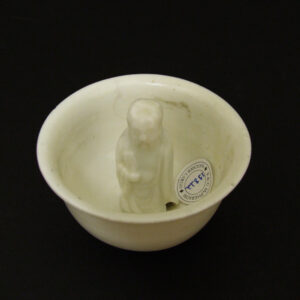
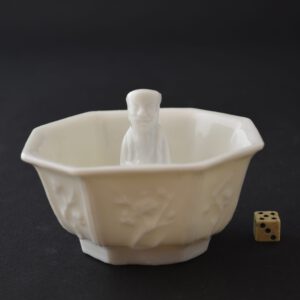
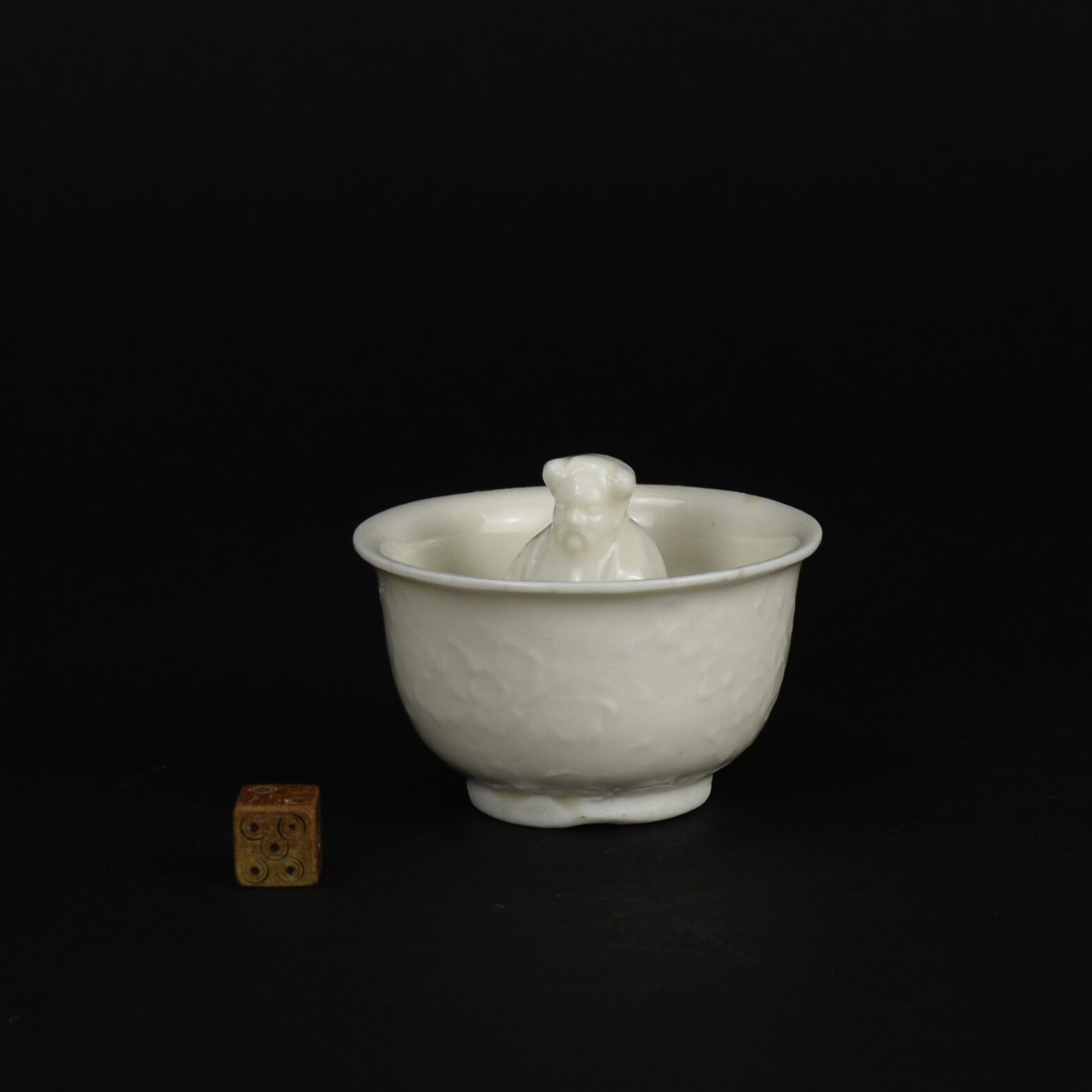
The Eight Immortals : Are a group of legendary Xian, immortals or transcendents in Chinese mythology. Each Immortals power can be transferred to a power tool that can give life or destroy evil. Together, these eight tools are called `Covert Eight Immortals`. Most of them are said to have been born in the Tang Dynasty or Song Dynasty. They are revered by the Taoists, and are also a popular element in the secular Chinese culture. They are said to live on Penglai Mountain-Island. The Immortals are : Immortal Woman He (He Xiangu), Royal Uncle Cao (Cao Guojiu), Iron-Crutch Li (LiTieguai), Lan Caihe,Lü Dongbin, (leader)Philosopher Han Xiang (Han Xiang Zi), Elder Zhang Guo(Zhang Guo Lao), and Zhongli Quan.
Zhongli Quan : He is one of the Eight Immortals of Chinese mythology, in legend he holds a peach and holds a large feather fan which can resurrect the dead and transform stone into silver or gold. He was also referred to Han Zhongli, as he was said to be from the Han Dynasty.


